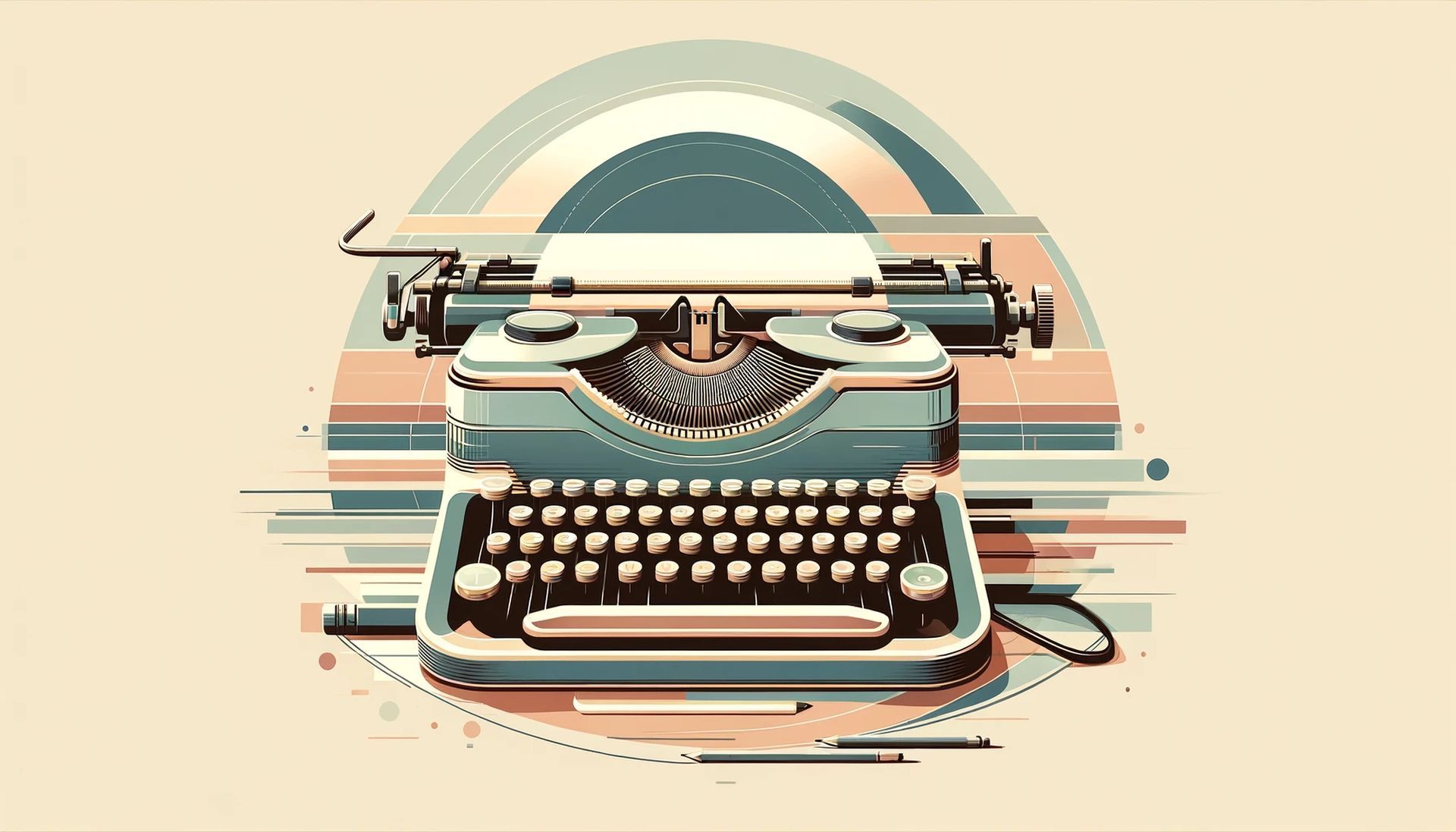How to use AI to write a book? We encounter this question daily, and although it may appear straightforward, achieving success requires careful consideration of various factors. Here, we’ll explore how AI is not just a tool for efficiency but a collaborator in the creative process, offering unique opportunities for aspiring and seasoned authors alike.
How to use AI to write a book?
Our journey through this guide will illuminate the benefits, processes, and nuances of using AI to craft a compelling narrative, aiming to equip you with the knowledge and skills to embrace AI as a co-author in your next literary venture.
- Understand AI in writing, its potential, and limitations
- Pre-write by defining your book’s concept, genre, and research
- Write with AI, customizing tools and using them for characters, plots, and dialogue
- Edit and refine with AI, focusing on grammar, style, and structure
- Use AI to generate beautiful images
- Overcome challenges by balancing AI and creativity
- Finalize and publish, using AI for review, publishing options, and marketing
Humanize your content with Stealth Writer AI
Understanding AI and its capabilities in writing
To effectively use the potential of AI in writing a book, it’s essential to grasp what AI is and what it is not. At its core, AI in writing refers to the use of machine learning algorithms and natural language processing to generate, edit, or enhance written content. These AI writing tools range from simple grammar checkers to sophisticated software capable of drafting entire chapters.
The capabilities of AI in writing are both impressive and diverse. It can suggest varied vocabulary, construct complex sentences, and even mimic specific writing styles. However, it’s crucial to recognize the limitations – AI is guided by the data it’s fed and cannot replace the human touch in creative nuances and emotional depth. Understanding these strengths and limitations is the first step in effectively utilizing AI for your book-writing journey.

In the next sections, we’ll explore how to prepare for writing with AI, the writing process itself, and the subsequent steps to refine and publish your AI-assisted book. Understanding how to use AI to write a book will change the way you perceive and approach the art of writing.
Make sure to check out the latest ChatGPT trends to brainstorm for viral and productive ideas. You could also opt for QuillBot AI tools, they could change the whole writing process!
Pre-writing
Before diving into the writing process with AI, laying a solid foundation is essential. This involves defining the concept and genre of your book. Are you crafting a science fiction epic or a heartfelt memoir? Your genre choice will guide the AI in style and content generation. Next, conduct research to feed your AI tool with relevant information. This could include historical facts for a period novel or scientific concepts for a tech thriller. The more specific and rich the data, the better the AI can assist you.
Creating a detailed outline is a crucial step in how to use AI to write a book. AI can help you structure your narrative, develop plot points, and even suggest character arcs. Use AI tools to create a chapter-by-chapter breakdown, ensuring a coherent flow of your story. This outline will serve as a roadmap for both you and the AI as you embark on the writing journey. For instance to enhance your creativity you could learn Midjourney prompts for characters!
Ask ChatGPT for a comprehensive outline for your book. You can enter this prompt: “Write a comprehensive outline for my book titled [Your book name here]“
Writing your book with AI
With your preparations complete, it’s time to start writing. Begin by setting up your chosen AI writing tool. Ensure it’s calibrated to your specific genre and style preferences. As you write, the AI will assist in various ways. It can help develop characters, suggesting traits and backstories based on your outline. For plot building, AI can offer creative twists and help maintain narrative pacing.

Dialogue creation is another area where AI can be incredibly useful. It can suggest dialogue based on character profiles and the context of the scene. Moreover, AI can assist in language and style enhancements, offering synonyms and sentence structure suggestions to refine your writing.
Remember, the goal of learning how to use AI to write a book is not to replace the author but to augment and streamline the creative process. Your unique voice and vision remain central to the narrative, with AI serving as a tool to bring your literary vision to life with greater efficiency and creativity.
After you are happy with your outline, you can feed it to ChatGPT and write a draft for the book with AI and work on it later. Make sure to write section by section. You can enter this prompt: “Let’s start writing the first section.“
Editing and refining the manuscript
Once your draft is complete, the next crucial phase in how to use AI to write a book is editing and refining your manuscript. AI tools can be incredibly efficient in this stage. They can scan your work for grammatical errors, awkward phrasing, and even stylistic inconsistencies. Utilize AI-driven grammar and syntax tools to polish your sentences, ensuring clarity and readability.
Beyond basic grammar checks, AI can enhance the coherence and flow of your story. It analyzes the narrative structure, suggesting improvements to make the plot more engaging and the character development more profound. This stage is not just about correcting errors but about elevating your manuscript to its highest potential.
Customizing AI feedback according to your specific needs is vital. Whether you’re focusing on pacing, dialogue, or descriptive language, AI can provide targeted suggestions. Remember, though, the final decision always rests with you, the author. AI proposes; you dispose.
Generate unique images with AI
Consider enhancing your book further with AI-generated images. AI can assist in creating original artwork, illustrations, or visual elements that complement your narrative. These unique images can add depth and engagement to your book, making it even more captivating for readers.
AI-powered image generation tools can help you design cover art, chapter illustrations, or even visual metaphors that align with your story’s themes. Just as with text, remember that AI is a tool to enhance your creative vision, allowing you to bring your story to life visually.
Let’s say you’re planning to write a book about Machine Learning Basics, you might consider asking DALL-E 3 or Midjourney for captivating cover art illustrations. Here’s our example:

If you don’t know how to use Midjourney or how to use DALL-E 3 check out our guides for detailed steps.
Overcoming challenges
Integrating AI into your writing process can come with its own set of challenges. One of the key issues is maintaining a balance between AI assistance and personal creativity. While AI can offer suggestions and improvements, it’s essential to ensure your voice and vision aren’t lost in the process.
Addressing concerns about the originality of AI-generated content is another hurdle. AI tools can produce content based on vast databases of existing literature, which might inadvertently lead to clichés or overused tropes. As an author, it’s your responsibility to inject originality and freshness into the AI’s suggestions.
Effective integration of AI in writing involves a learning curve. Be patient and experiment with different tools and approaches to find what works best for you. The goal of learning how to use AI to write a book is to use AI as a tool to enhance your creative process, not to overshadow your unique storytelling abilities.
Finalizing and publishing your AI-assisted book
As you approach the completion of your AI-assisted manuscript, the focus shifts to finalizing and preparing it for publication. This involves a meticulous review process, where both AI tools and human insight play critical roles. AI can assist in finalizing the draft by ensuring consistency in style and tone, checking for any overlooked errors, and even suggesting formatting adjustments for better readability.

When it comes to publishing, the sector has been transformed by AI technologies. Explore AI-driven publishing options, which can include algorithm-based platforms for self-publishing or AI tools that can help identify suitable publishers and agents. Additionally, AI can be invaluable in the marketing and promotion of your book. From analyzing market trends to optimizing your book’s online presence, AI offers a range of tools to help your book reach its intended audience.
Final remarks
Back to our original question: How to use AI to write a book? It’s clear that AI has opened up new frontiers in the world of writing. While it offers significant benefits in terms of efficiency and creativity, the true artistry of a book still relies on the human touch. This guide encourages aspiring authors to experiment with AI, using it as a tool to amplify their creative voice. AI is no joke. You can create a myriad of things, just like a Disney AI movie script!





